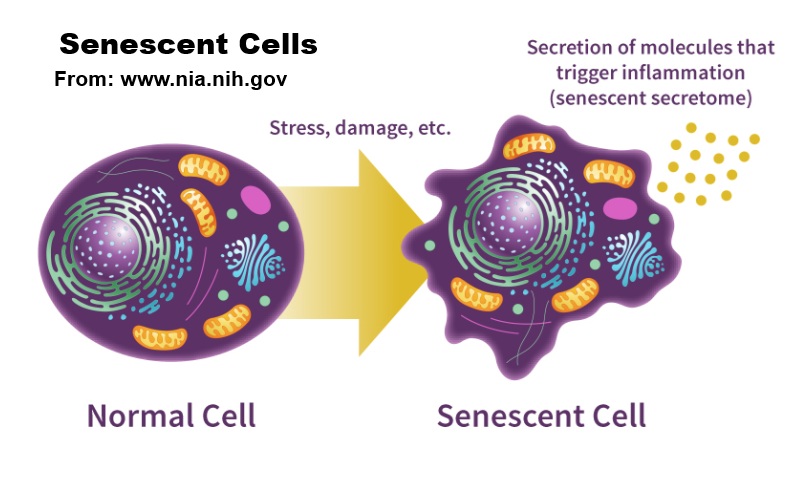Combat Aging Inside Your Cells
Published by Alkaline Water Plus

View my podcast "Ways to Improve Your Cellular Aging" while reading this post.
Cellular Aging
The scientific term for cellular aging is "senescence." Senescent cells are cells that stop replicating but don't die. They can build up in the body and contribute to the body getting sick as it's aging.
- Senescence = non-functional cells which don't die.
- Some people call senescent cells "zombie cells." because they act like they're brain-dead but don't die.
Cellular aging is a natural part of the cycle of life. When cells get old and cease to function but don't die, they lead to disease conditions in the body. There is more data now than ever before about the condition of cellular senescence, which seems to afflict so many as they age.
How Does Senescence Happen?
- Oxidation or "free-radical" damage occurs within a cell.
- Other stresses also occur, including but not limited to lack of sleep, improper nutrition, and dehydration.
- This damages the cell internally and causes the cell to malfunction or stop functioning altogether. It turns off, so to speak. But if the damage doesn't kill the cell, it takes on some pretty zombie-like qualities.
- These damaged cells tend to damage others around them (making them zombies, too.)
How Does the Body React to Senescent Cells?
- Damaged, inactivated cells aren't just inactive. They accumulate and cause inflammation, pain, arthritis, and further deterioration of the body. It's hard to slough off these inactive cells because they're not dead. So, unfortunately, people find themselves stuck in a vicious cycle of getting sicker and less active as they age.
- Senescence-associated secretory phenotype (SASP) A phenotype is just a set of observable traits and characteristics. Here are some observable traits and characteristics of senescent cells: They are not just dormant. They secrete high levels of inflammatory elements, which may lead to chronic inflammation, which in turn can underlie cancer and other age-related diseases. It is a tested fact that the number of senescent cells in people increases with age. Also, the immune system and other body functions become less effective.
What to Do about Senescent Cells
Cellular senescence is associated with things like Alzheimer's, cancer, arthritis, stroke, diabetes, osteoporosis, cardiovascular disease, and even declining eyesight. So, what does one do about it?
Big Pharma Answers
- Drugs have been developed (called "Senolytics"), that target senescent cells, or "zombie cells," and kill them.
Natural Answers
Drinking H2 Hydrogen Water
Until recently, it wasn't believed that one could repair aged, damaged, non-functioning cells. However, experimentation with hydrogen (used for its antioxidant properties) has shown otherwise.
Recent research has revealed that drinking H2-water (hydrogen water / ionized water) has the potential to alleviate cellular senescence. Its unique properties, such as its tiny size and lipid solubility, enable it to penetrate damaged cells and repair them, essentially restoring their DNA and functionality. This promising discovery offers hope for the future of health and aging.
Breathing hydrogen gas is also effective, but not as user-friendly or holistically beneficial.
It's important to note that while H2 is not a cure, it has shown significant improvements in alleviating and preventing cellular senescence. Many scientific trials have pointed to its ability to repair the damage inside senescent cells, allowing them to return to their normal function. This should provide reassurance and confidence in the potential benefits of H2.
The Selectivity of the H2 Molecule
Dr. Ohta discovered that H2 acts as an antioxidant, but it is selective and for this reason is better than anything known to date. It targets only damaged DNA, and doesn't harm or alter healthy cells or DNA. This selectivity ensures that only the cells that need repair are affected, minimizing potential side effects. It has no adverse reactions, either. Other antioxidants often turn themselves into free radicals after donating their electrons. After H2 gives up its extra electrons, it simply evaporates. There is no toxicity and no waste removal necessary.


